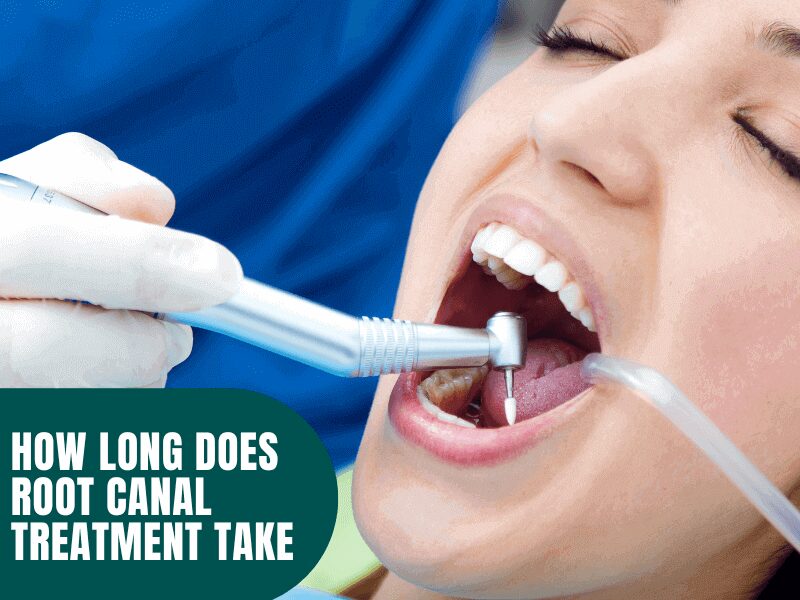Patients scheduling endodontic therapy frequently ask about procedure duration for proper planning and anxiety management. Most root canal procedures require 60 to 150 minutes per appointment, with simple front teeth taking approximately one hour while complex molars may need up to two and a half hours. The exact timeframe depends on tooth anatomy, infection severity, and whether single-visit or multiple-appointment treatment is necessary.
Understanding how long root canal treatment takes helps patients prepare mentally and practically for this tooth-saving procedure. Modern techniques have streamlined the process significantly, making treatment more efficient while maintaining high success rates. Factors like canal complexity, patient comfort needs, and healing requirements all influence the total treatment duration for optimal outcomes.

| Treatment Phase | Single Visit | Multiple Visits | Time Range |
| Simple Root Canal | 60-90 minutes | 2-3 appointments | 30-45 minutes each |
| Complex Root Canal | 90-120 minutes | 2-4 appointments | 45-90 minutes each |
| Retreatment | 90-150 minutes | 2-5 appointments | 60-90 minutes each |
| Total Treatment Time | 1-2.5 hours | 2-6 weeks | Varies by complexity |
What Determines How Long Root Canal Treatment Takes?
Tooth Location and Anatomy
The location of your tooth significantly impacts treatment duration. Front teeth (incisors and canines) typically require 60-75 minutes since they have single, straight roots with one canal. Back teeth (molars and premolars) can take 90-120 minutes due to multiple roots and complex canal systems. Upper molars often have three to four canals, while lower molars typically have two to three canals, each requiring thorough cleaning and shaping.
Severity of Infection
Infected teeth with extensive decay require longer treatment times. Active abscesses or severe infections may necessitate multiple appointments with medication placed between visits. Chronic infections often cause calcification within canals, making them harder to locate and clean, potentially extending procedure time by 30-45 minutes.
Individual Patient Factors
Patient-specific factors influence endodontic treatment duration, including pain tolerance levels, anxiety management needs, and medical history considerations. Previous dental work, such as crowns or large fillings, may complicate access and extend treatment time. Patients with limited mouth opening or strong gag reflexes may require additional breaks during the procedure.
The Root Canal Process: Step-by-Step Timeline
Initial Consultation and Diagnosis (15-30 minutes)
Your endodontist begins with comprehensive X-rays and clinical examination to assess tooth condition and plan a treatment approach. Digital imaging helps identify canal anatomy and infection extent. Treatment planning discussion includes duration estimates, appointment scheduling, and post-treatment care instructions.
The Root Canal Procedure
Step 1: Anesthesia and Access (10-15 minutes)
Local anesthesia administration ensures complete numbness before beginning. Your dentist creates a small access hole through the tooth crown to reach the infected pulp chamber. Rubber dam placement isolates the treatment area and maintains sterile conditions.
Step 2: Cleaning and Shaping (30-60 minutes)
This longest phase involves removing infected pulp tissue and bacteria from root canals using specialized instruments. Canal shaping creates proper form for filling material while preserving healthy tooth structure. Complex cases with curved or calcified canals require additional time and specialized techniques.
Step 3: Disinfection and Filling (15-30 minutes)
Thorough irrigation with antimicrobial solutions eliminates remaining bacteria. Root canals are filled with biocompatible material called gutta-percha and sealed with dental cement. This step ensures long-term treatment success and prevents reinfection.
Step 4: Temporary or Permanent Filling (10-15 minutes)
The access hole receives either temporary or permanent filling material, depending on the treatment plan. Patients requiring crowns typically receive temporary fillings until final restoration placement.
Follow-up Appointments (if needed)
Complex cases may require additional cleaning sessions spaced 1-2 weeks apart. Final restoration placement, including dental crowns, typically occurs 2-4 weeks after root canal completion once inflammation subsides and healing progresses.
Single-Visit vs. Multi-Visit Root Canal Treatment
When Single-Visit Treatment is Possible
Single-appointment root canal procedures work best for teeth with minimal infection, straightforward anatomy, and cooperative patients. Many endodontists prefer this approach for front teeth and premolars when conditions allow. Treatment completion in one visit reduces patient anxiety and eliminates scheduling complications.
Why Multiple Visits May Be Necessary
Multi-visit treatment becomes necessary for severe infections requiring inter-appointment medication. Complex cases with difficult-to-access canals, patient comfort concerns, or unexpected complications during treatment may extend to multiple appointments. This approach allows thorough disinfection and gives inflamed tissues time to heal between sessions.
Recovery Time Considerations
Immediate Post-Treatment (24-48 hours)
Most patients experience mild discomfort for 24-48 hours after root canal therapy. Over-the-counter pain medications typically manage post-procedure sensitivity effectively. Avoiding hard foods and chewing on the treated tooth helps prevent complications during initial healing.
Complete Healing Timeline (2-4 weeks)
Root canal healing occurs gradually over 2-4 weeks as surrounding tissues recover from infection and treatment. Crown placement scheduling typically occurs after 2-3 weeks when tooth stability is confirmed. Complete healing may take several months as bone regeneration around tooth roots progresses.
Factors That Can Extend Root Canal Treatment Time
Complications During Procedure
Calcified canals, common in older patients, require specialized instruments and additional time for negotiation. Broken instrument removal, though rare with modern techniques, can extend treatment duration by 30-60 minutes. Unusual root anatomy, including extra canals or curved roots, increases procedure complexity and time requirements.
Patient-Related Delays
Difficulty achieving adequate anesthesia may require additional injections and waiting time. Jaw muscle fatigue or patient discomfort necessitates periodic breaks during longer procedures. Scheduling conflicts or patient availability can extend the total treatment timeline across multiple weeks.
Tips to Minimize Root Canal Treatment Duration
Before Your Appointment
Taking prescribed antibiotics or anti-inflammatory medications as directed helps reduce infection and inflammation before treatment. Adequate rest and proper nutrition support your body’s healing response. Arriving 15 minutes early allows time for paperwork completion and anxiety management techniques.
During Treatment
Immediate communication about discomfort helps your endodontist adjust technique or provide additional anesthesia. Following positioning instructions and staying relaxed facilitates efficient treatment progression. Deep breathing exercises and meditation techniques can help manage anxiety during longer procedures.
Conclusion
Planning for endodontic treatment becomes manageable when you understand the various factors affecting procedure duration. While treatment lengths vary from one hour for straightforward cases to multiple appointments for complex situations, modern endodontic techniques ensure efficient and comfortable care that preserves your natural tooth structure. The investment in proper root canal therapy duration pays dividends through successful outcomes and long-lasting results.
Whether your case requires single-visit completion or extends across several weeks, the primary goal remains eliminating infection and saving your tooth. Following your endodontist’s pre-treatment and post-care instructions optimizes healing and treatment success. Remember that adequate time spent during the procedure ensures thorough cleaning and proper sealing, ultimately providing you with years of restored function and oral health.
Frequently Asked Questions
Is Root Canal Treatment Faster Than Tooth Extraction?
While tooth extraction takes only 20-30 minutes, root canal treatment (60-150 minutes) is often faster overall when you consider replacement options. Dental implants require 3-6 months for complete healing, while bridges need multiple appointments for adjacent tooth preparation.
Do Emergency Root Canals Take Longer Than Planned Procedures?
Emergency root canal procedures often take 15-30 minutes longer due to severe swelling, difficulty achieving numbness, and the need for immediate pain relief measures. Emergency cases may also require additional drainage procedures that extend treatment time.
How Does Root Canal Retreatment Time Compare To Initial Treatment?
Root canal retreatment typically takes 90-150 minutes per appointment and often requires 2-5 visits. The process is more time-consuming because your endodontist must remove existing filling materials and navigate previously treated canals that may have complications.
Will My Age Affect How Long The Root Canal Takes?
Age can influence treatment duration as older patients often have more calcified canals that require additional time to negotiate. However, modern techniques help minimize these delays, and age alone rarely adds more than 15-20 minutes to treatment time.
Do Root Canals On Baby Teeth Take Less Time?
Root canal procedures on primary (baby) teeth, called pulpotomies, typically take 30-45 minutes since they involve different techniques and don’t require complete root canal cleaning. However, these procedures are less common as baby teeth are often extracted instead.
How Long Before I Can Get A Crown After A Root Canal?
Most endodontists recommend waiting 2-3 weeks before crown placement to ensure proper healing and tooth stability. However, temporary crowns can be placed immediately if aesthetics or function are concerns, with permanent crowns following after the healing period.



